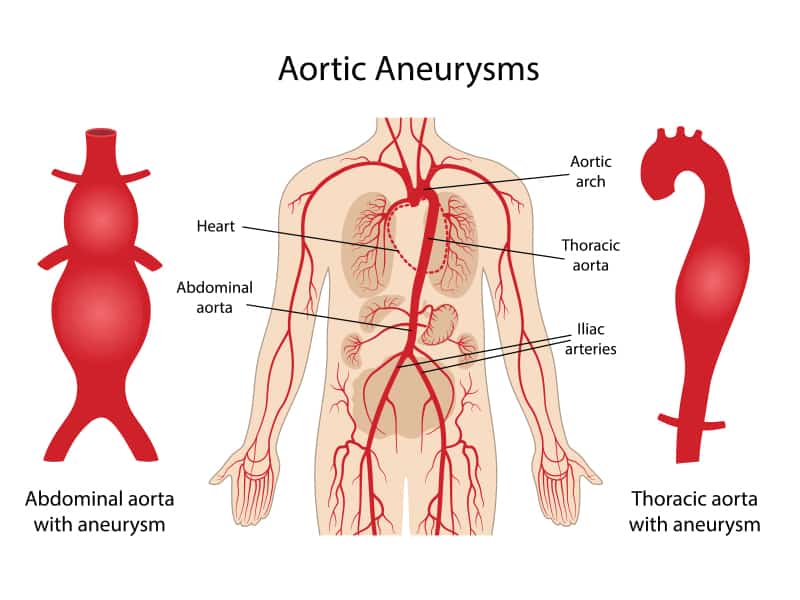An aortic aneurysm is a dilation (enlargement) of the aorta (the main artery in the body) that normally causes no symptoms except when ruptured. They are most commonly located in the abdominal aorta but can also be located in the thoracic aorta, close to where the artery leaves the heart.
The problem is that a ruptured aortic aneurysm almost invariably causes massive internal bleeding which is usually fatal. According to the NHS, around 8 out of 10 people with such a rupture either die before they reach hospital or do not survive surgery.
Aortic aneurysms occur in 4-12% of individuals (men much more commonly than women) but are usually small. They tend to grow slowly (around 1 – 2mm per annum) so early detection by means of a CT scan of the chest and/or abdomen allows any enlargement to be detected at an early stage and monitored for when prophylactic surgery would be most beneficial. A recent audit from the Royal College of Surgeons indicates that the success rate of such elective surgery is 98.6%.
